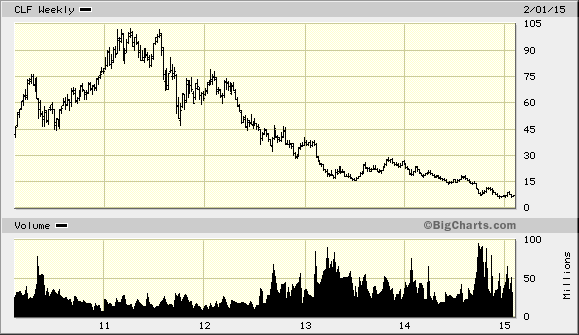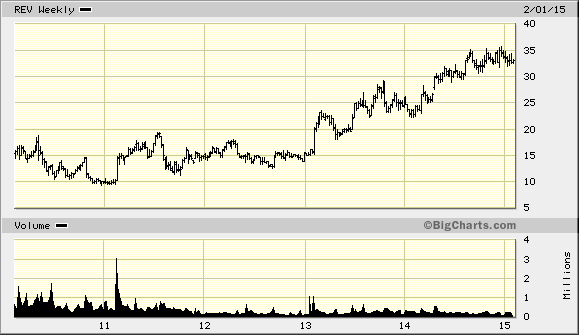CLF-2014 Year End Earnings-Release $7.5 billion write-off and thus $1.4 billion in NEGATIVE equity. Headed to bankruptcy? I wouldn’t bet on it, but there go the screens for low multiples of book value. Investors typically run from stocks like this.
Revlon VL has had negative equity for over a decade, but increased cash flow is what has driven this stock higher.
- Timothy R. Watts University of Alaska Anchorage
Negative shareholder equity–at least from a securities perspective–is not a problem in and of itself generally in the U.S. It can result from any number of corporate histories. Corporate valuations tend to vary widely from their shareholder equities. I am not aware of any state’s corporate law that considers it a problem, in and of itself, either. In Delaware, the measure that matters is “surplus,” which is drawn from a corporation’s market value rather than its book value. Delaware corporations, for example, can pay dividends, borrow money, issue new securities to investors, etc. notwithstanding a negative s/h equity, so long as they have adequate “surplus” meet minimum capital and other legal requirements. I would say s/h equity, while important, is seen more as an accounting function that can-but does not always-track the actual value of a company. The only time I have ever seen it come up as a legal matter is in the case of one company that wanted to self-insure itself for workers compensation liabilities. The state denied the company’s application to self-insure on the basis of negative shareholder equity–notwithstanding its market capitalization was in the hundreds of millions. It was just a requirement buried in the state’s regulations that used s/h equity as its measure of a corporations value (and, thus, its ability to pay worker’s comp claims).
Jun 2, 2013
Oscar Varela · University of Texas at El Paso
Look at Revlon. Here is a firm with about 1.2 bil in assets and 1.9 bil in debt, giving it negative equity of 0.7 bil. This is less than it was a few years ago, when its equity was about negative 1 billion. Yet it survives, and is an NYSE firm.
Timothy R. Watts · University of Alaska Anchorage
Your example is very good because it shows that a change in stockholders’ equity can be a good measure of performance. Revlon’s increase in s/h equity shows that it is performing well, even though it is negative (and will probably be for years to come). Although, like book value, there are plenty of other reasons s/h equity change absent a valuation change. A general example is companies that have (from prior years) built a huge bank of net operating losses (NOLs), which can shield a company from tax liability for a long time. These NOLs, while having value cannot be booked as assets unless the company is showing, according to accounting standards, that it will actually use them. Once a company that has been losing money (and accumulating NOLs as well as, likely, shareholder deficit) becomes consistently profitable, these NOLs can be booked as an asset. The asset is the value of future tax savings. That can turn a company’s negative book value into a positive book value overnight–even though the company’s market value hasn’t changed at all. This can also happen the other way. I recall this happening to Ford around the time of the financial crisis. They booked a massive loss in one quarter largely on the basis of the elimination from their balance sheet a tax asset based on the value of their NOLs. It was a bad quarter for them to be sure (like everyone else), but the accounting loss magnified it several times in a way that didn’t track performance. Ford, after all, was the only major car company in the U.S. that avoided bankruptcy during the crisis.
Jun 7, 2013
How_long_can_a_company_survive_with_negative_equity_and_how_long_is_this_state_permitted_in_the_USA
I bring the negative equity to your attention because it seems like a good search strategy to find mis-valuation. First, many screens wouldn’t pick these companies, second most investors would shun them, investors often fixate on accounting convention rather than underlying economics, and finally it seems very counter-intuitive.
Note the article from an early post in this course: Behavioral Portfolio Management
If anyone wants to study this further, let me know.



